Where Do Elephants Live?
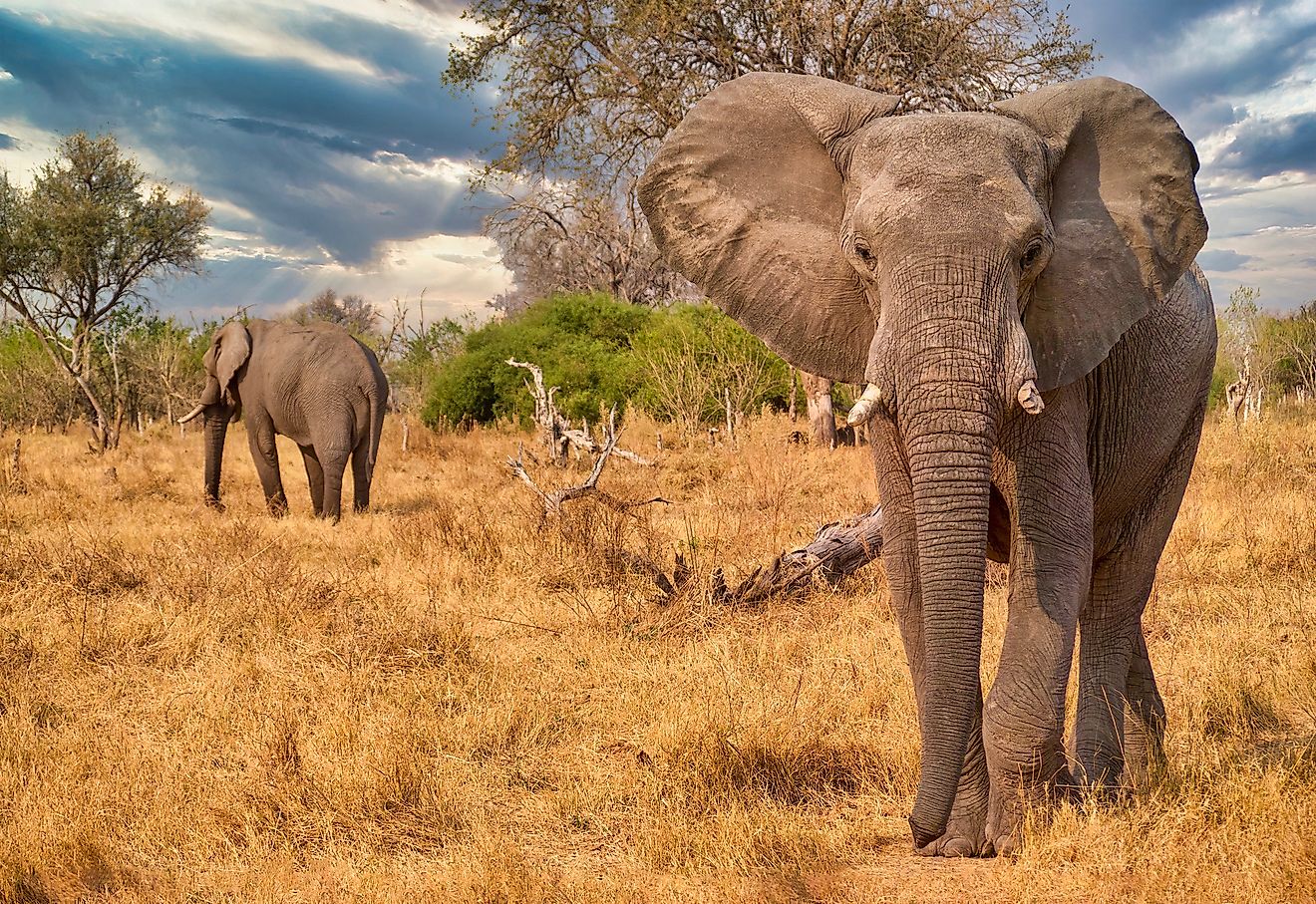
The world’s largest living terrestrial mammal belongs to the Elephantidae family. Elephants are easily recognized by their enormous size, characteristic long proboscis (or trunk), pillar-like limbs that support their enormous body weight, large fan-shaped ears, and their remarkable dentition that has been modified into tusks. Elephants live for a relatively long time and symbolize power, intelligence, and auspiciousness across various cultures.
Elephants are Landscape Architects and Keystone Species that play a critical role in seed dispersal, providing nourishment, water, and suitable habitat for all other plants and animal communities in the ecosystem. They are among the most intelligent and emotionally complex species, that form deep family bonds while living in tight matriarchal herds.
Content:
- Elephants Are Found In Africa And Asia
- African Elephant : Range And Habitat
- Asian Elephants : Range And Habitat
- Threats To Elephants Across Their Range
Elephants Are Found In Africa And Asia
It has been estimated by zoologists that there were probably 17 species of elephants in the wild, but currently, only two species of living elephants are found. They are the African Elephant (Loxodonta africana, Blumenbach, 1797) and the Asian Elephant (Elephas maximus, Linnaeus, 1758). The two species have certain differences that allowed for their separate classification. Due to the presence of their distinctly long trunks, the elephants have been classified under the Order Proboscidea and are the only surviving members of the Elephantidae family.
African Elephant
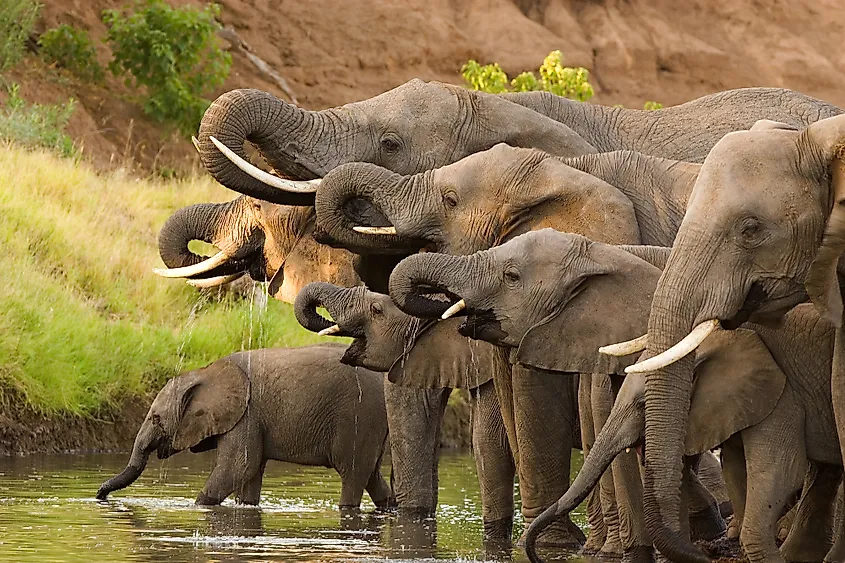
The African Elephant is the largest among all species of elephants. They can live up to 70 years in the wild and their characteristically larger ears resemble the shape of the African continent. There are two genetically different subspecies of African elephants that live on the African continent. They are the savanna (bush) elephant (Loxodonta africana africana) and the African forest elephant (Loxodonta africana cyclotis).
Asian Elephant
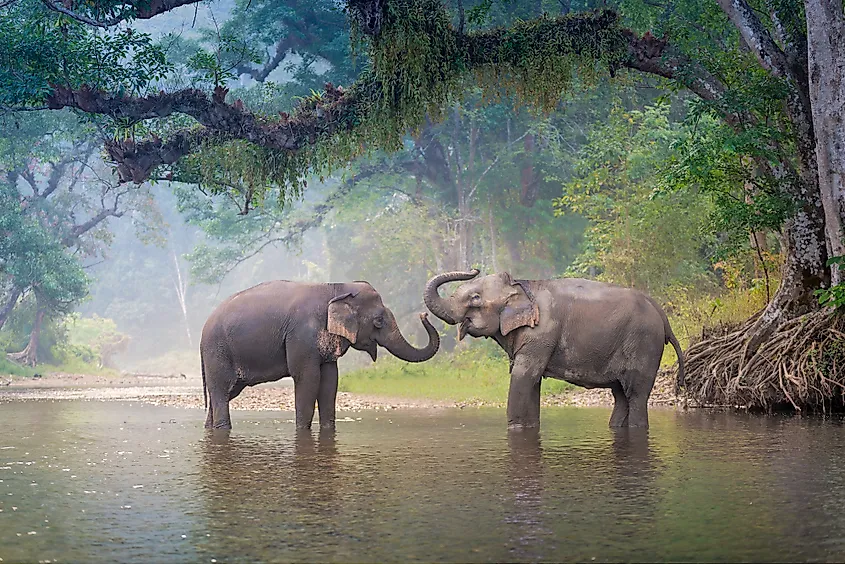
The comparatively smaller Asian Elephant resides in Southeast Asia. As per The International Union for Conservation of Nature and Natural Resources (IUCN), the Asian elephants are considered to be ‘Endangered’ and the African elephants are considered to be ‘Vulnerable’.
African Elephant : Range And Habitat
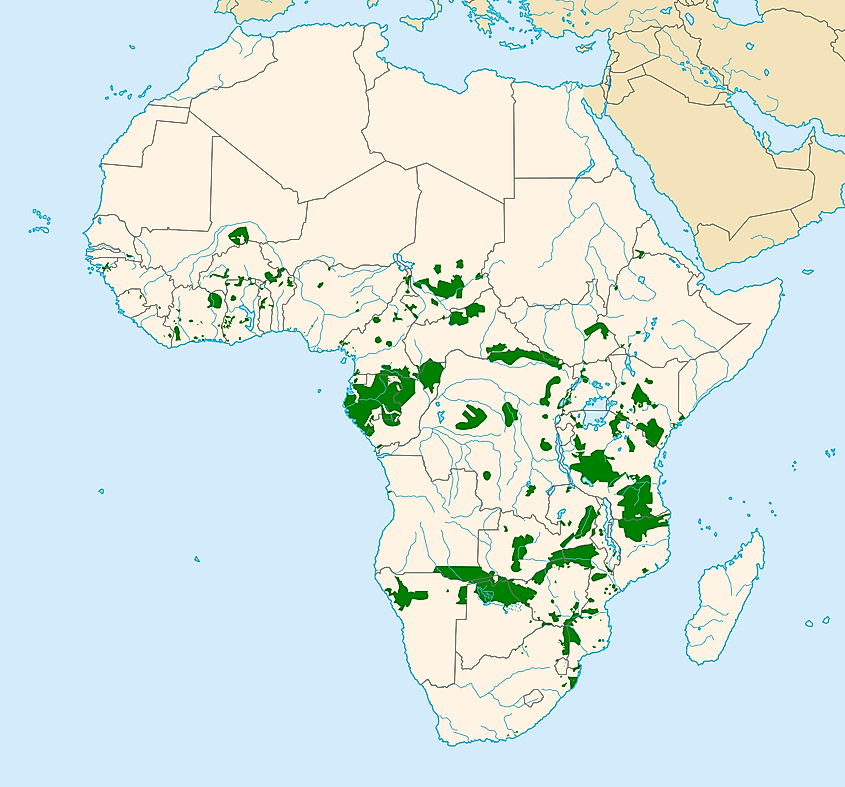
African elephants (Loxodonta africana) are found throughout the savannas of sub-Saharan Africa, the rainforests of Central and West Africa, and the Sahel desert area of Mali. As estimated by the African Wildlife Foundation, there are about 415,000 African elephants in the wild. African Elephants have been placed under Appendix I of CITES.
The African forest elephant (Loxodonta africana cyclotis) is the smallest living elephant species and reside mainly in the equatorial forests of central and western Africa. These elephants prefer habitats with dense rainforest cover. Significant populations are found in the Congo basin, Liberia, Democratic Republic of Congo, Cameroon, Benin, Central African Republic, Cote d’ Ivoire, Equatorial Guinea, Gabon, Ghana, Guinea-Bissau, Mali, Mauritania, Nigeria, Niger, and Uganda. As per several studies, the population of African forest elephants has been estimated to be 10,000 individuals; the vast majority of which resides in the forests of Gabon.
The African bush elephant (Loxodonta africana africana) is the world’s heaviest and the largest living elephant species and is more widely distributed throughout Africa. These elephants prefer diverse habitats ranging from grasslands to semi-desert areas and are mainly found in eastern and southern Africa, in Botswana, Zimbabwe, Kenya, Tanzania, Zambia, South Africa, Angola, Namibia, Rwanda, Mozambique, and Ethiopia. As per several studies, the population of African bush elephants has been estimated at 405,000 individuals.
There are also three recognized subspecies of African bush elephants, that are found in different African countries. These are:
- Southern African bush elephant (Loxodonta africana africana): mainly found in Southern Congo, Malawi, Gabon, Botswana, Namibia, Zimbabwe, Zambia, Mozambique, Eswatini, and South Africa.
- East African bush elephant (Loxodonta africana knochenhaueri): mainly found in Kenya, Uganda, Tanzania, Rwanda, Angola, and the Democratic Republic of Congo.
- West African bush elephant (Loxodonta africana oxyotis): mainly found in Senegal, Nigeria, Ethiopia, Somalia, Liberia, Mauritania, and Northern Cameroon.
Asian Elephants : Range And Habitat
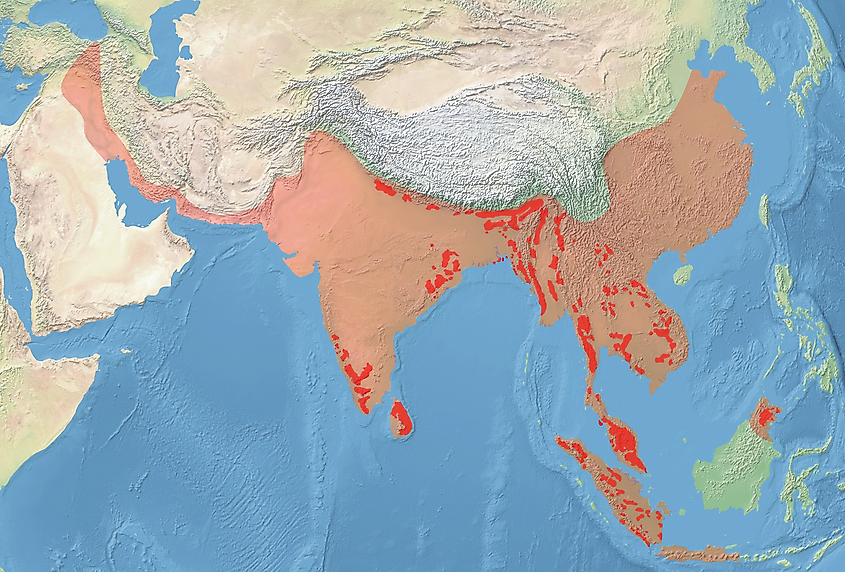
Asian Elephants (Elephas maximus) are mainly found in the rain and scrub forests of South and Southeast Asia. There are three subspecies of Asian Elephants: The Sri Lankan elephant (Elephas maximus maximus), the Indian elephant (Elephas maximus indicus), and the Sumatran elephant (Elephas maximus sumatranus). Some researchers, also classify the Bornean elephant as a distinct subspecies. The Sri Lankan elephant is the largest among all the Asian elephant subspecies.
Asian Elephants once ranged over a vast area from the Tigris and Euphrates river basin in West Asia to the Yangtze-Kiang river in China in the east and across Southeast Asia. Currently, their distribution is confined to India, Nepal, Bangladesh, Bhutan, Myanmar, Sri Lanka, Thailand, Malay Peninsula, Laos, China, Cambodia, and Vietnam. Estimated at 27,312 elephants, India holds by far the largest number of wild Asian Elephants accounting for about 55% of the world’s Asian Elephant population.
The historical range of Elephants in India has shrunk, confining elephants into distinct geographical zones. The elephant population in India currently ranges in 29 Elephant reserves spread over 65,000 sq. km forests in North-East, Central, North-West, and South India. The Elephants have been symbolized as India’s National Heritage Animal and have been granted the highest protection under Schedule I of the Wildlife Protection Act, 1972.
The Sri Lankan elephant is mainly found in the drier regions of the country and consists of about 2,100 individuals. The extremely low population of the Sumatran elephant makes it one of the most critically endangered Asian elephant subspecies.
Threats To Elephants Across Their Range
Habitat loss, deforestation, poaching, road and rail accidents, persecution by humans, are some of the several challenges facing elephant populations worldwide. Through the years, the elephant populations have become isolated and now occur in much smaller populations than what is needed for their long-term survival.
Habitat Loss, Fragmentation, And Degradation
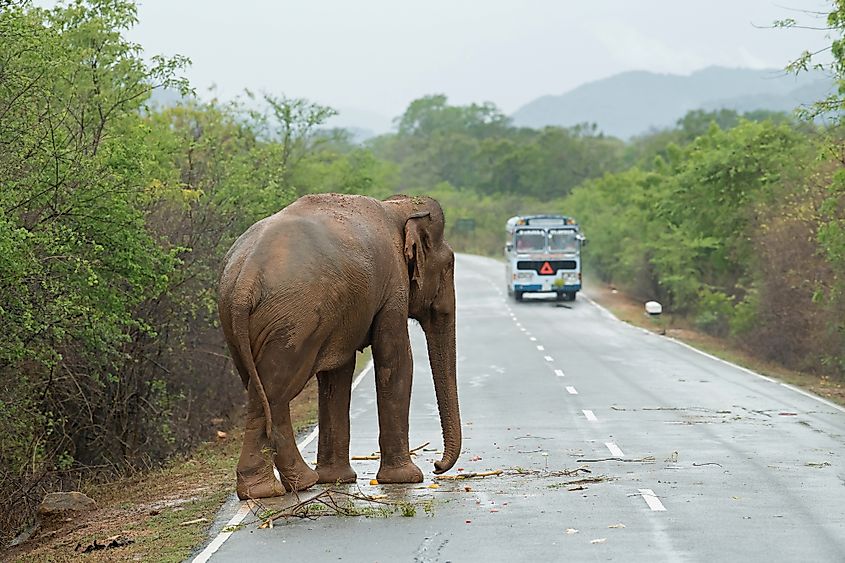
Elephants are long-ranging species that require vast areas to roam for browsing, foraging, and for a fairly unhindered gene flow across populations to ensure their long-term viability. As the human population continues to grow exponentially, the demand for increased land use for several anthropogenic purposes has led to the degradation of habitats and fragmentation of forest cover. Most of these areas which the elephants have previously inhabited have currently been used for anthropogenic activities, thereby reducing the amount of land available for the safe movement of these animals.
Rise In Human-elephant Negative Interactions Across Their Range
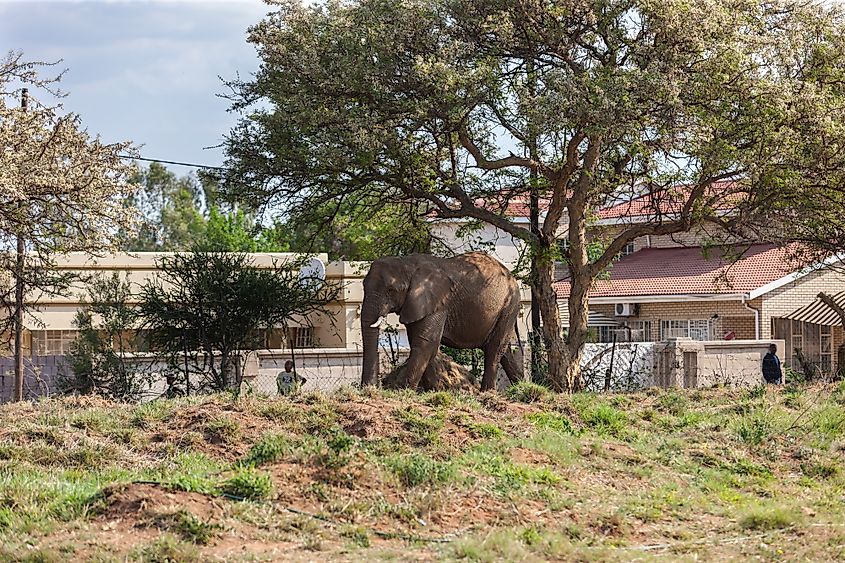
As elephants are forced to move farther and farther for their foraging activities, this brings them much closer to human settlements and results in Human-Elephant Conflict. Moreover, humans have also encroached on elephant habitats and made way for the development of several linear infrastructure projects like roads, canals, and railways that have in turn led to an increase in conflict with the elephants.
These development projects around the elephant habitats have also led to the loss of the elephant’s traditional movement paths. When the elephants find their familiar trek routes blocked, the disturbed animal becomes very nervy and turns hostile against the humans.
It has been estimated that elephants have caused severe damages to more than 1 million hectares of crops and over 400 humans have been annually killed in various encounters with elephants. As more human dwellings and livelihoods creep into the wildlands, the conflict between elephants and humans is bound to increase.
Elephants have also been subjected to retaliatory killings by humans, through poisoning, electrocution, train-hits, knee-jerk captures, herd translocations, and ivory poaching.
Poaching
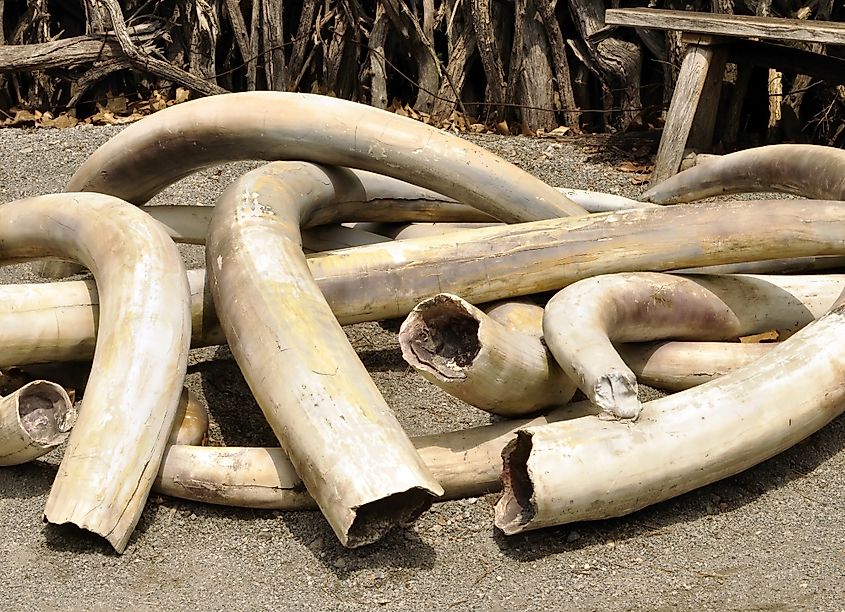
According to WWF, the biggest reasons for the loss in the African Elephant populations have been due to the illegal poaching for their tusks (ivory), hunting for sport, desertification, and expansion of human populations. This incessant and increased slaughter of elephants has made them insecure and more aggressive towards humans.
Poaching for ivory has also led to a skewed sex-ratio since a huge number of male elephants have been killed for their tusks. The ivory and bushmeat trade although now illegal in many parts of Africa is still an ongoing issue threatening the elephants.
Climate Change
Climate change studies have also revealed that major proportions of the elephant’s habitat will become significantly drier and hotter in the coming years, resulting in poorer foraging conditions and threatening the survival of these species.











